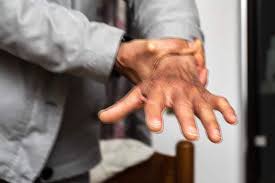Tremors in the hands are often linked with older age, but many young individuals also grapple with health conditions that significantly disrupt their daily routines, from simple tasks like writing to more intricate activities. The involuntary shaking of hands, medically known as hand tremor, is a common occurrence.
Hand tremor refers to a neurological condition characterized by involuntary, rhythmic muscle contractions that result in shaking movements in one or both hands. While everyone experiences slight tremors during movement or maintaining a particular posture, they are usually subtle and go unnoticed. However, hand tremors become more apparent when holding the hands out straight or during periods of stress or anxiety. Although these movements are typically not life-threatening, they may indicate underlying health issues related to parts of the brain controlling movement.
Aside from affecting the hands, tremors can occur in other body parts such as the head, arms, legs, and voice box. The precise cause of hand tremors remains elusive, but studies suggest a connection with mild degeneration of the cerebellum, the part of the brain responsible for movement coordination. Additionally, genetic factors play a significant role in over half of the cases, with certain neurological disorders like Parkinson’s disease, stroke, traumatic brain injury, and dystonia also contributing to shaky hands. Furthermore, certain medications and alcohol misuse can exacerbate hand tremors.
Common symptoms of hand tremor include rhythmic shaking of the hands, difficulty with precision tasks like writing or buttoning a shirt, challenges in holding and controlling objects, and alterations in handwriting.
While there is no cure for most tremors, various treatment options are available depending on the underlying cause. These may include managing underlying conditions, making lifestyle changes such as avoiding stimulants and excess alcohol, practicing relaxation techniques for tremors induced by anxiety, adjusting medications, and engaging in physical therapy exercises to enhance muscle control and coordination.

